Times Square is a major entertainment center and tourist destination of New York, attracting over 50 million visitors a year. However, before Time Square was a major attraction point, it was home to adult theaters, burlesque shows, go-go bars, sex shops, peep shows, and night clubs. The New York Times described 42nd Street between Seventh and Eighth Avenue as the worst place in town in the 1960s. During the 70s and 80s, the crime rates were high, and police morale was low, with over 2,300 crimes committed every year in a one-block radius.
After the Great Depression Times Square fell into disrepair, sex shops, grindhouses, and adult theaters slowly took over the music halls and boutique hotels. The neighborhood areas became an open market for drugs and prostitution. Buildings were left vacant, becoming home to squatters as they fell into disrepair. One of the city’s busiest corridors, every day, thousands of people would have to pass under the marquees of numerous adult theaters lining the street.
These vintage historical photographs will give you a glimpse of Time Square at the peak of its degradation in the 1970s and 1980s.
Also check, The Combat zone — adult enthronement district in downtown Boston in the 70s.
#1 A team of the Guardian Angels — a volunteer patrol group dedicated to making New York’s subway system safe — get ready to go on patrol in 1980.
#2 Actor Bill Murray poses in front of the famous 25-cent peep shows of Times Square in the mid-1970s.
#3 A man walking past the entrance to a topless bar in Times Square, New York City, 1975.
#4 An elderly man walks past signs, posted on glass doors, with illustrations depicting a scantily clad woman holding a bat on her fingertips, New York, 1981.
#5 Women protesting against Pornography, which marched through the neighborhood in 1979.
#6 A porn shop with cinema and live shows in the Times Square area in October 1975.
#7 A man looks at the offerings of a peep show store adjacent to a “sensitive meeting place” with “lovely girls.” Brothels, typically operated by organized crime, ran in the open without any legal repercussions.
#8 The ‘Follies Burlesk’ showing the upcoming shows for ‘Valerie Craft’ and ‘Marinka’, 46th St. and Broadway, New York City, 1978.
#9 The entrance to the ‘Rap Studio’, a strip club and adult book shop in New York City, 1978.
#10 The Roxy Burlesk Theater on 42nd Street, New York City, 1980.
#11 Cinema signs on the Rivoli Theatre and surrounding cinemas on Broadway advertising adult films and shows, New York City, 1983.
#12 Tourists looking into the windows of Times Square as they pass under the marquee for the Globe theater advertising the “filthiest show in town.”, 1975.
#13 A man stands outside of a strip club on 42nd Street in the late 1970s.
#14 A Christian proselytizer walks in front of an adult theater on 8th Avenue.
#15 An advertisement for the musical Oh Calcutta dominates the corner of 8th Avenue and 42nd Street in 1981.
#16 A family walks by “the world’s largest selection” of live nude girl models in 1970.
#17 By the late 1970s, adult stores and theaters dominated Times Square, with Rolling Stone referring to it as the “sleaziest block in America” in 1981.
#18 A group of prostitutes walk through the side streets of Broadway and Times Square in New York in the summer of 1971.
#19 An undercover cop leads a man who’s been arrested for selling crack in 1986.
#20 Posters advertising burlesque shows at the Follies Burlesk and Gaiety Theater in in Times Square, New York City, 1975.
#21 Men walking past the entrance to one of the strip clubs around Times Square, New York City, 1975.
#22 The ‘Follies Burlesk’ showing the upcoming show for the ‘Gaiety Male Theater’ above ‘Howard Johnson’s’ restaurant on 46th St. and Broadway, New York City, 1978.
#23 A sign offers ‘Private Preview Booths’ at a peep show, New York City, circa 1978.
#24 Cinemas and burlesque theatres on 42nd Street, New York City, 1984.
#25 The homeless populations of Times Square and neighboring Port Authority skyrocketed during the 1970s and 1980s.
#26 A man adorning only a leather hat and thong scales a Marlboro billboard on 44th Street in 1980.
#27 A salesman at a sex shop surveys his storefront as he waits for customers to stroll by. 1970
#28 An usher stands near the box office of a movie theater that screens pornography films. No one under the age of 21 would be let in.
#29 Twenty-five-cent peep shows were the first adult stores to arrive in Times Square beginning in 1966. Enormously profitable, they opened the door for adult movie theaters, strip clubs, and sex stores.
#30 Street scene showing a sex shop and massage parlour titled ‘Porno House’, New York City, 1975.
#31 The ‘Whirly Girly Revue’ and ‘Bigtime Vaudeville’ strip club signs at the ‘Follies Burlesk’ on 46th St. and Broadway, New York City, 1978.
#32 Two men walking past the entrance to a topless disco, New York City, circa 1980.
#33 Peep show with sound onlly 25 cents.
#34 An exterior view of a cinema which is showing the adult film ‘The Filthy Rich’, New York City, 1982.
#35 The Circus Cinema in Times Square, showing ‘Taboo II’, an incest-themed adult film, New York City, 1983.
#36 Two young hustlers sharing their happy moment.
#37 A teenage hustler fooling around with two transvestites.
#38 People converse in front of the infamous “House of Paradise.”
#39 Rolling Stone referred to Times Square as the “sleaziest block in America.”
#40 Black Jack Exotic Book Store on 42nd Street between Seventh and Eighth Avenue features the “latest and greatest.” These stores were rampant in the 1970s.
#41 Time square, 70s.
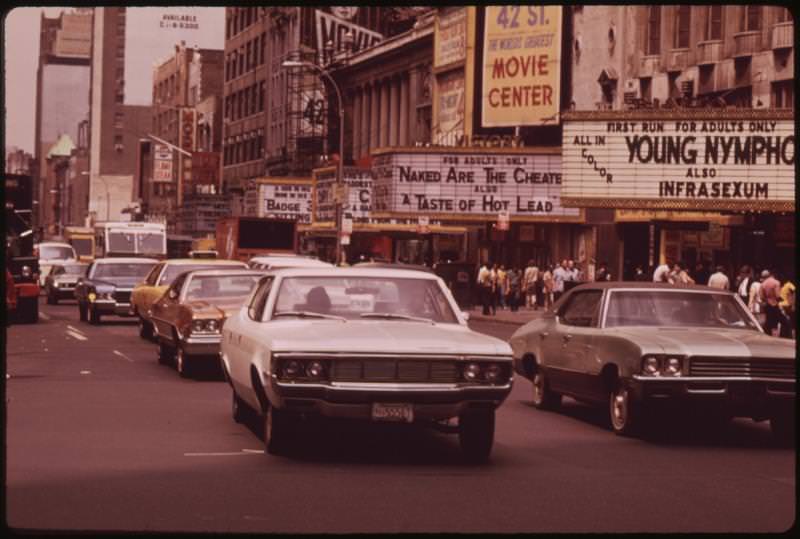
As the Guardian describes, "Times Square’s venerable old theatres and spectacular movie palaces were torn down for office buildings or allowed to slowly rot away, showing scratchy prints of cheesy second-run films or pornography, which any casual visitor might have thought was the city’s leading industry."


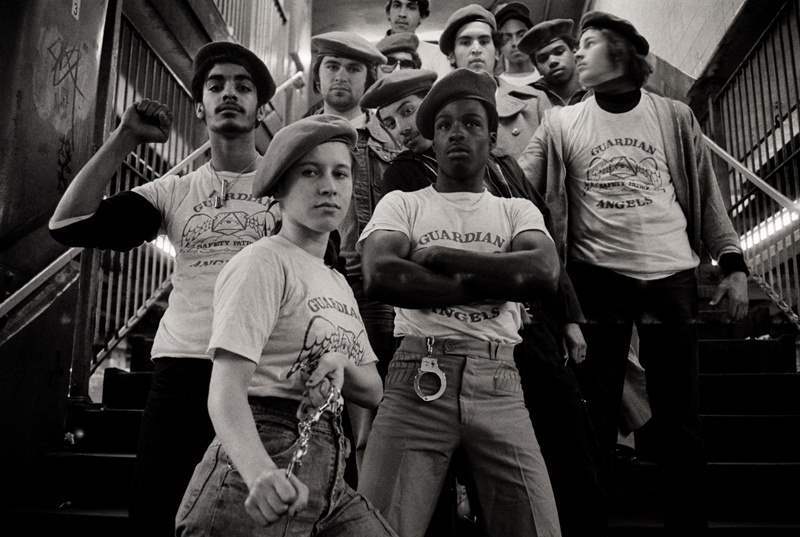
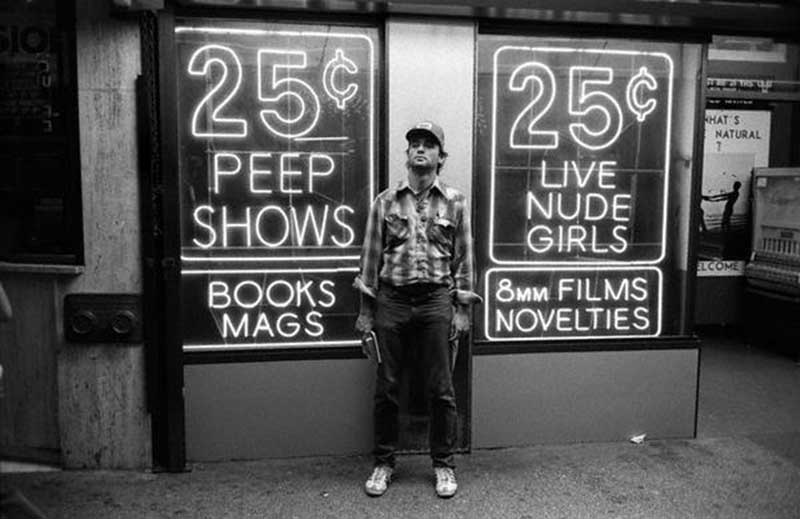
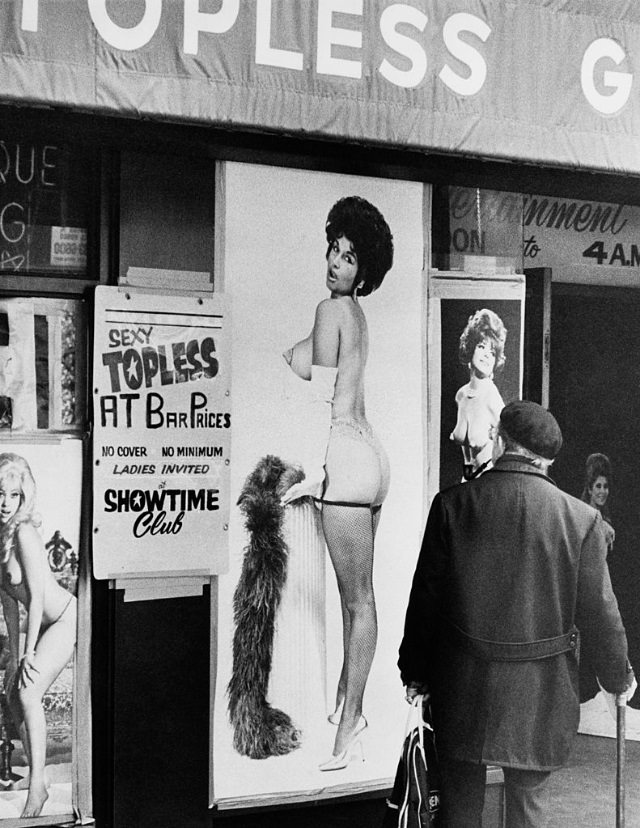
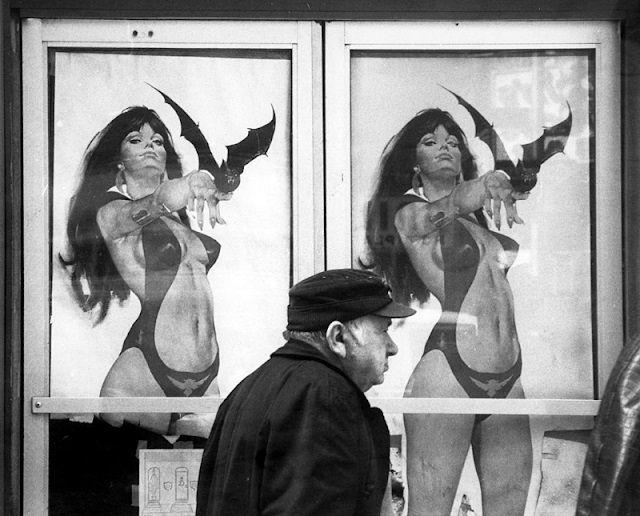
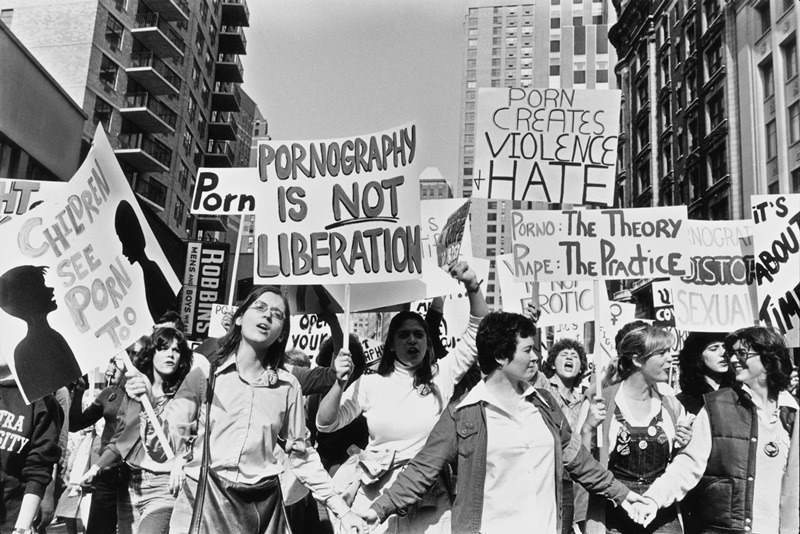
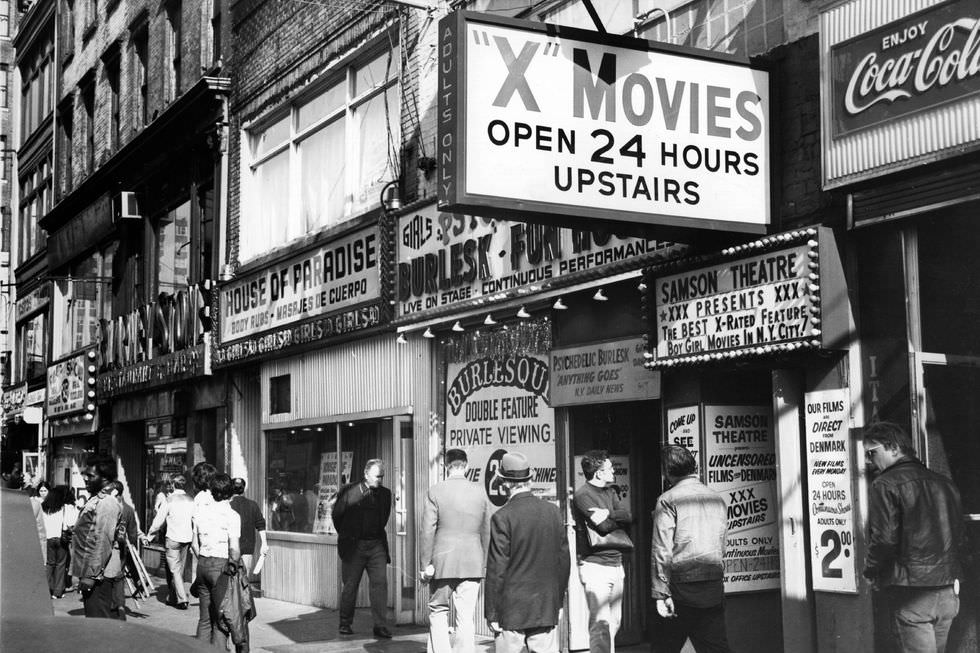
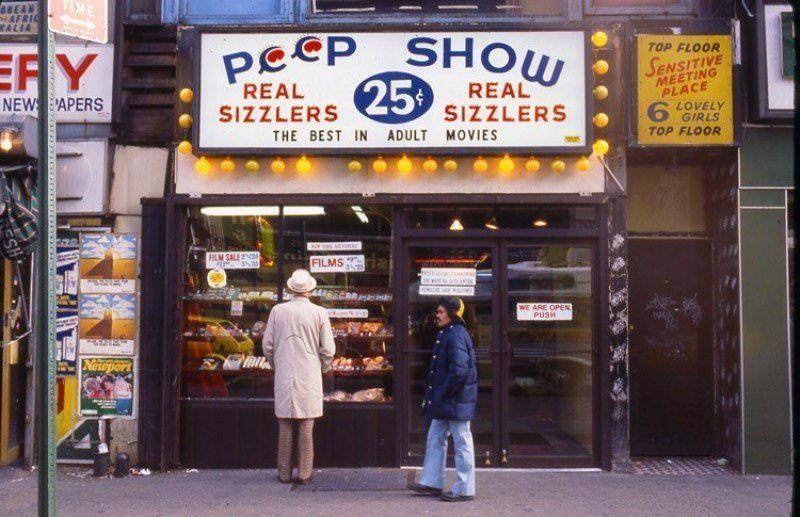
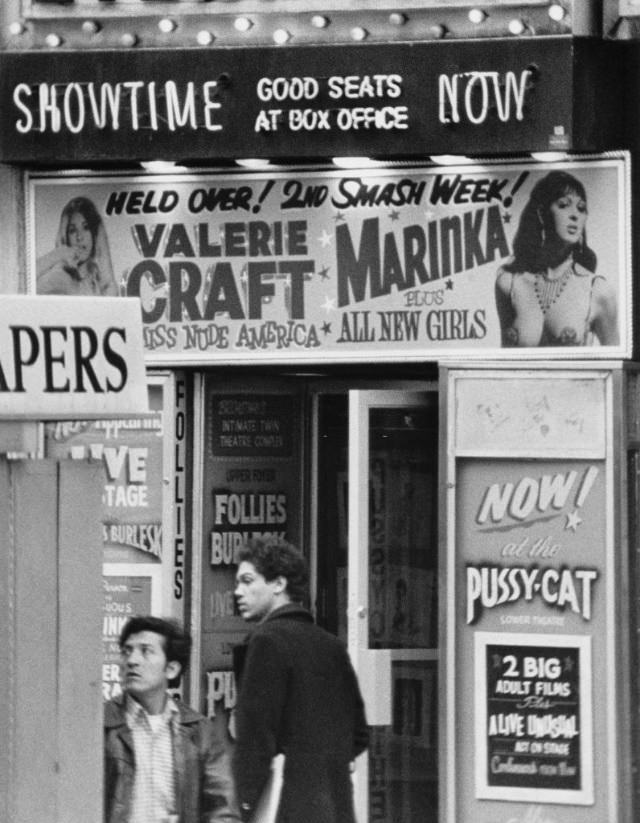
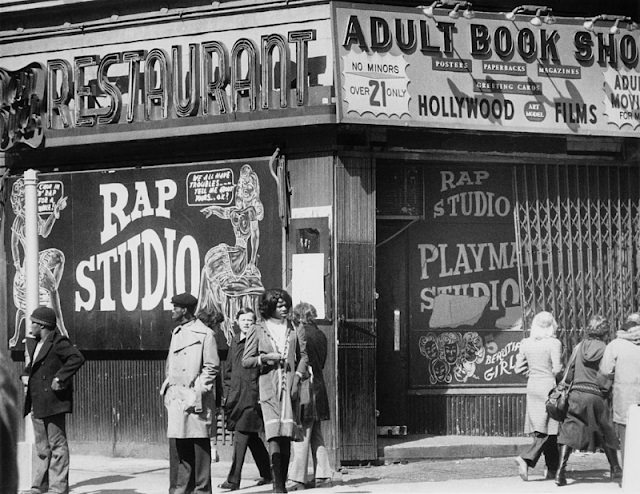
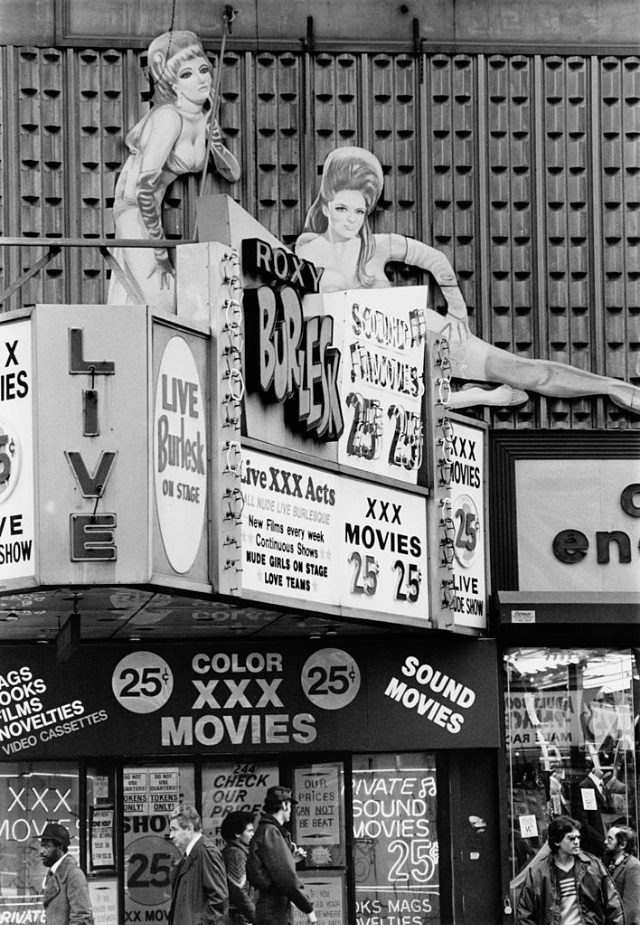
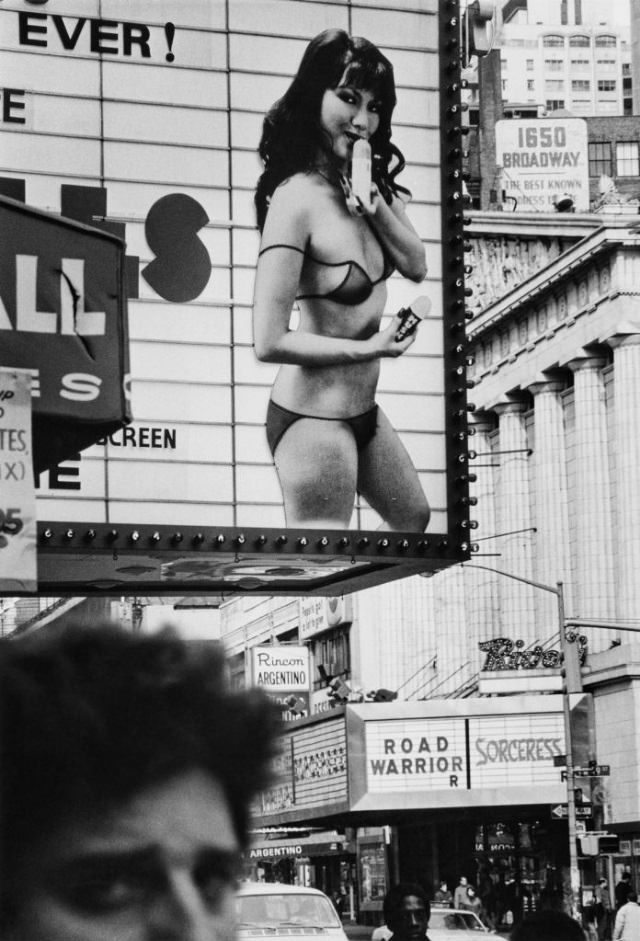
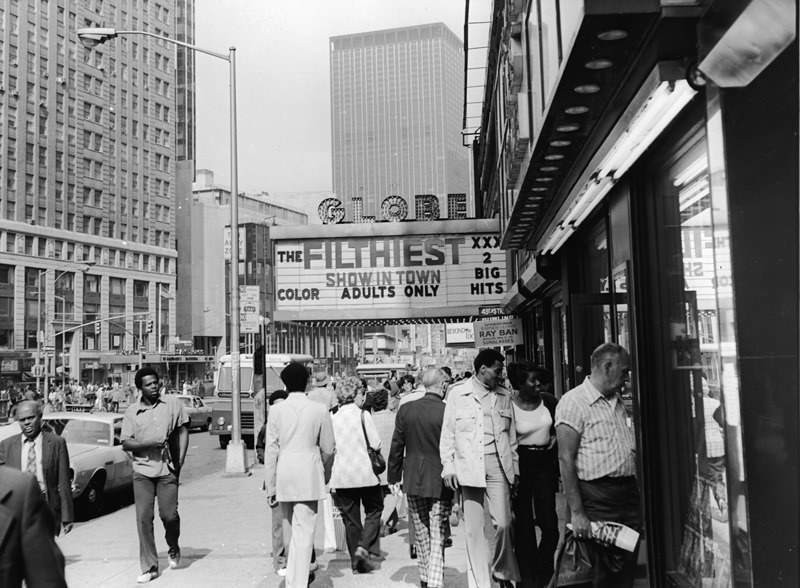
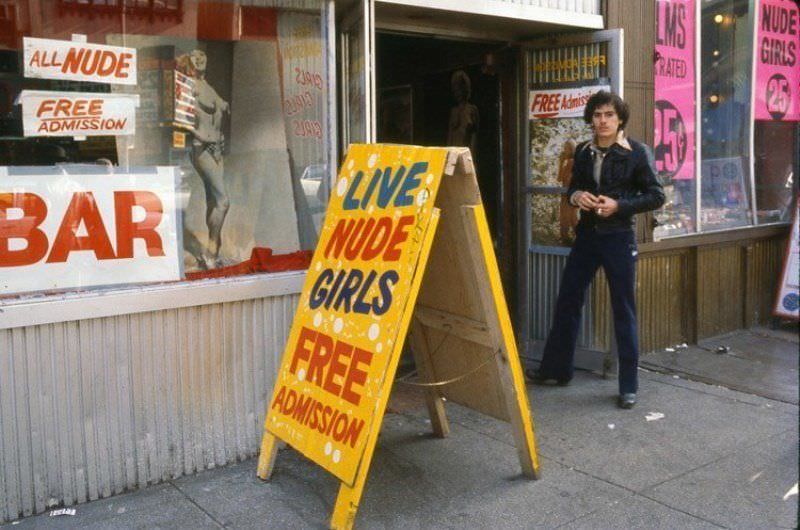
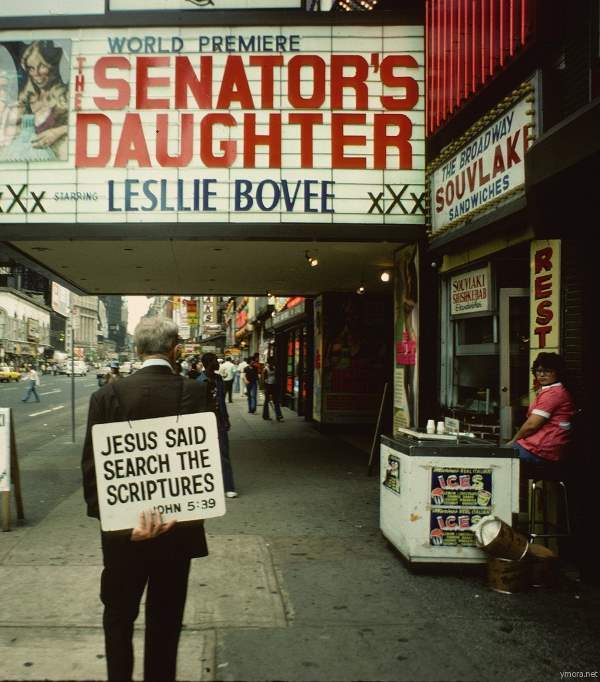
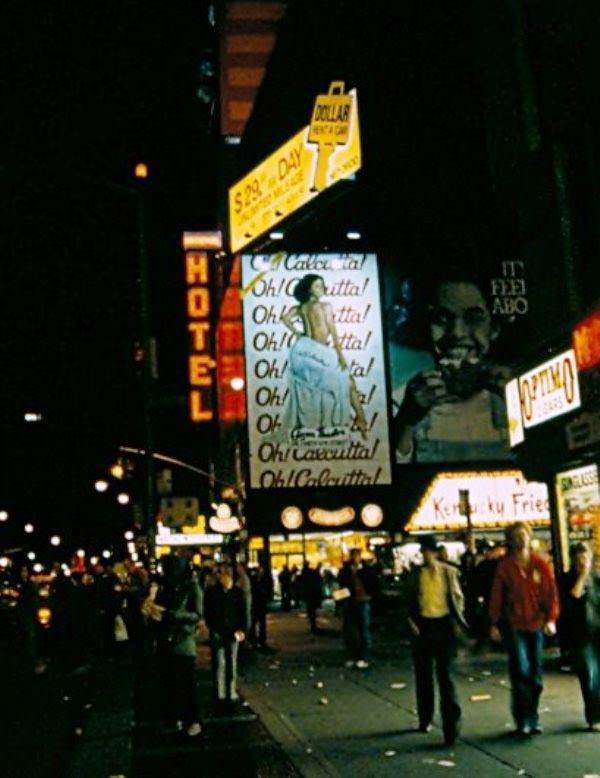
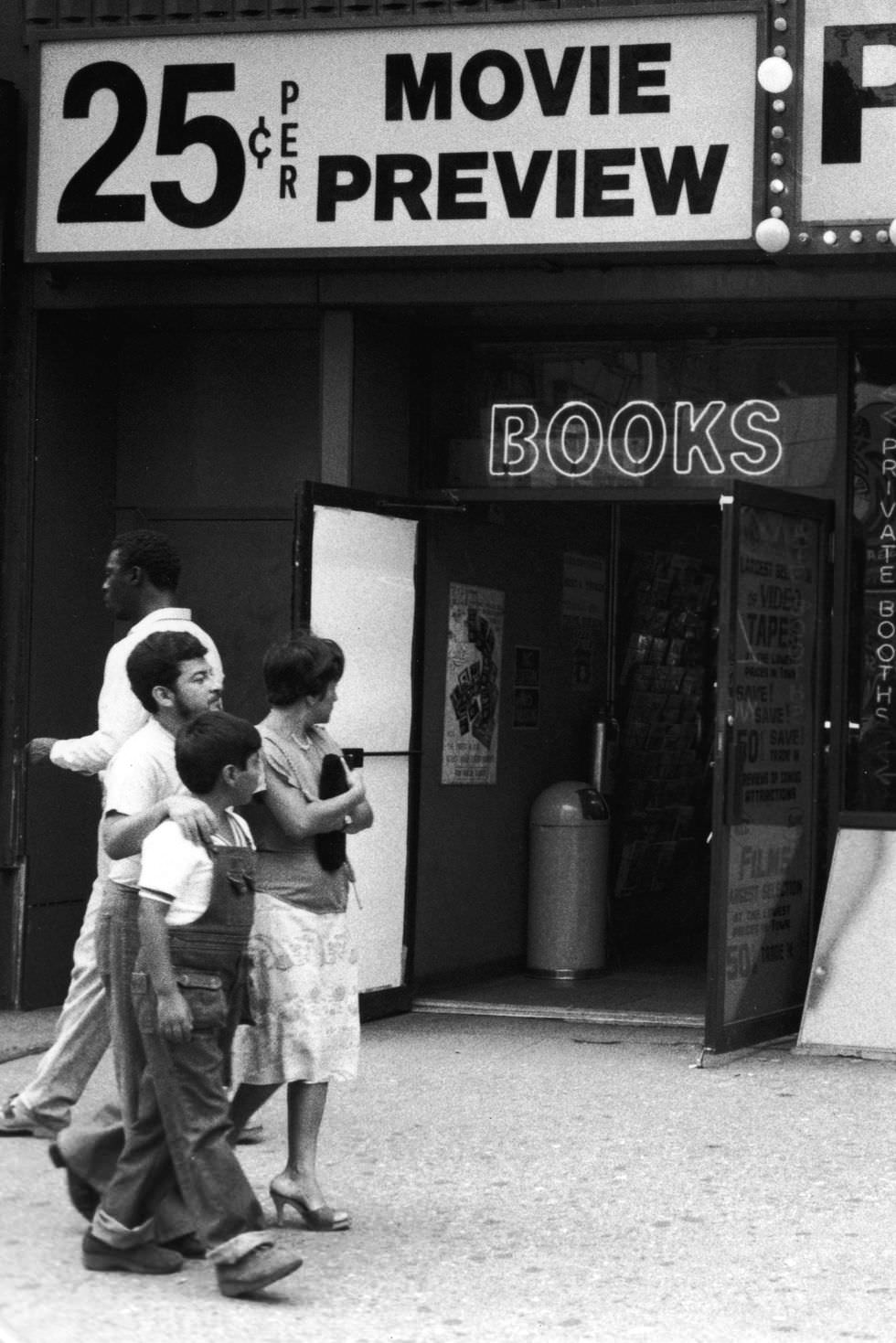
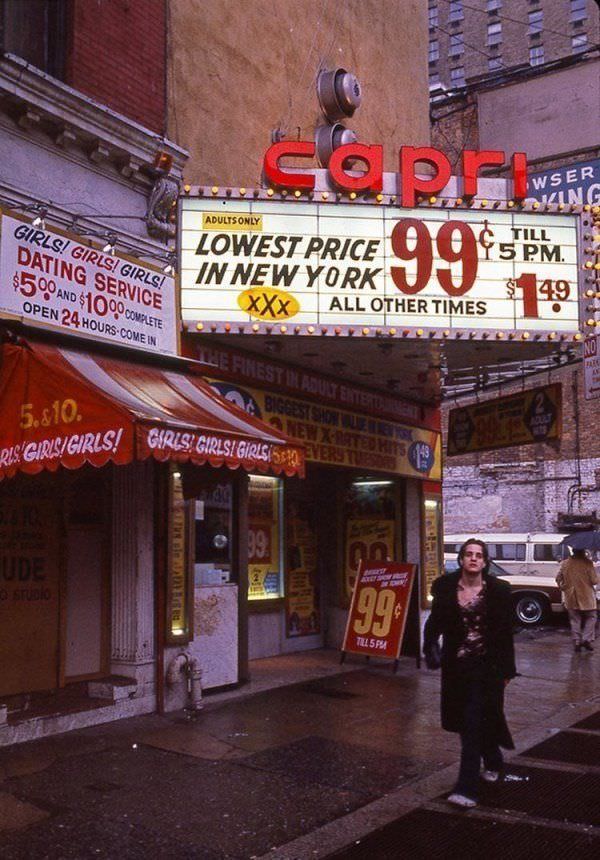
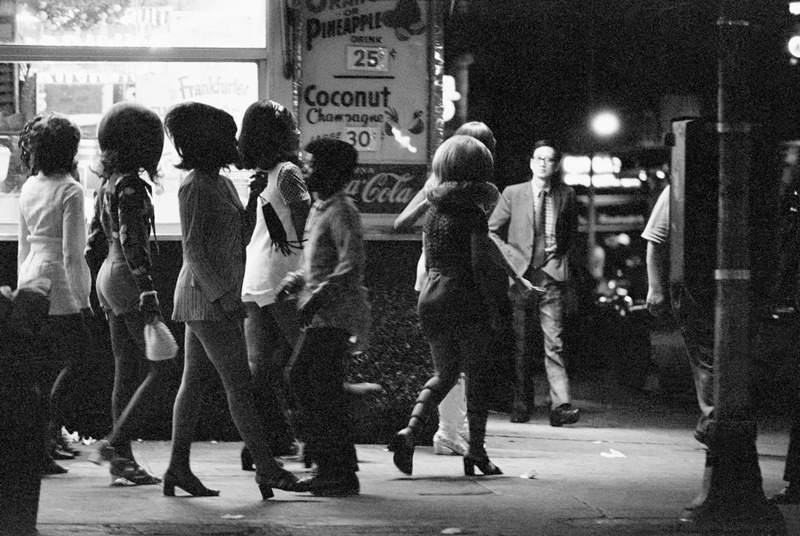
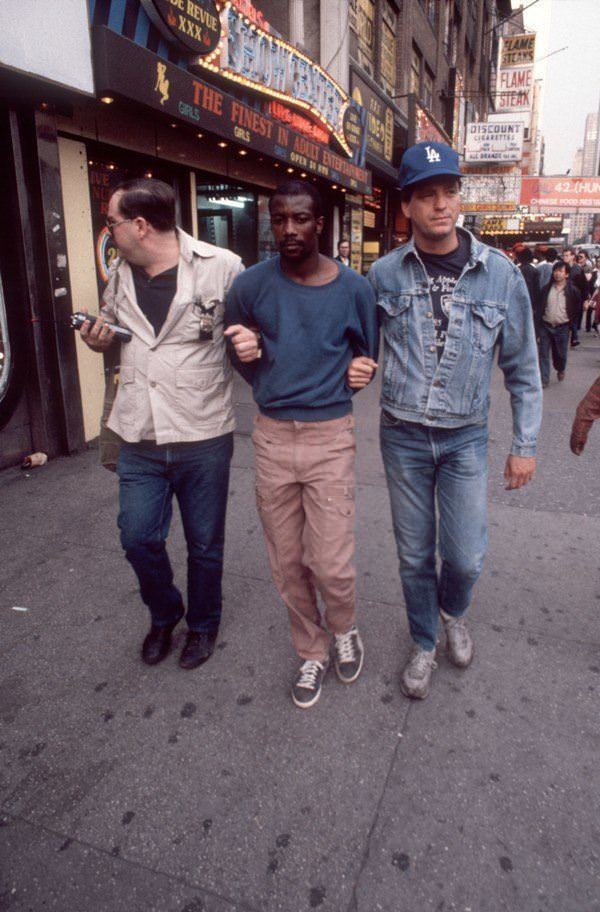
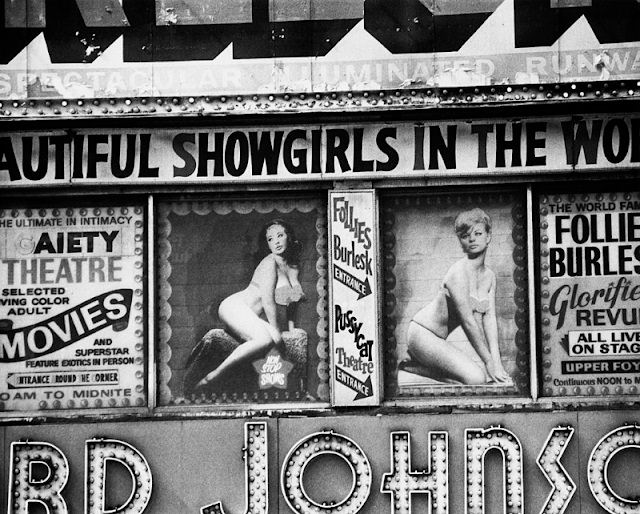
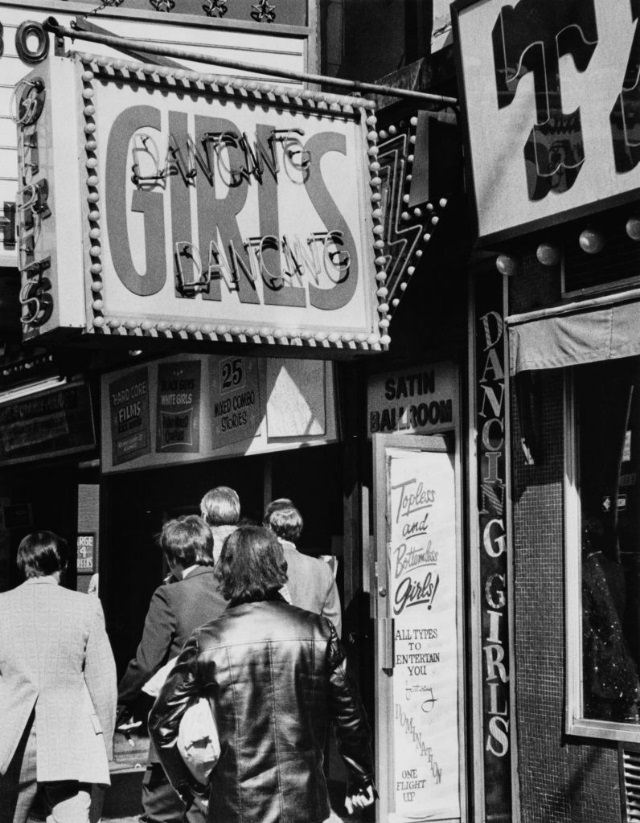
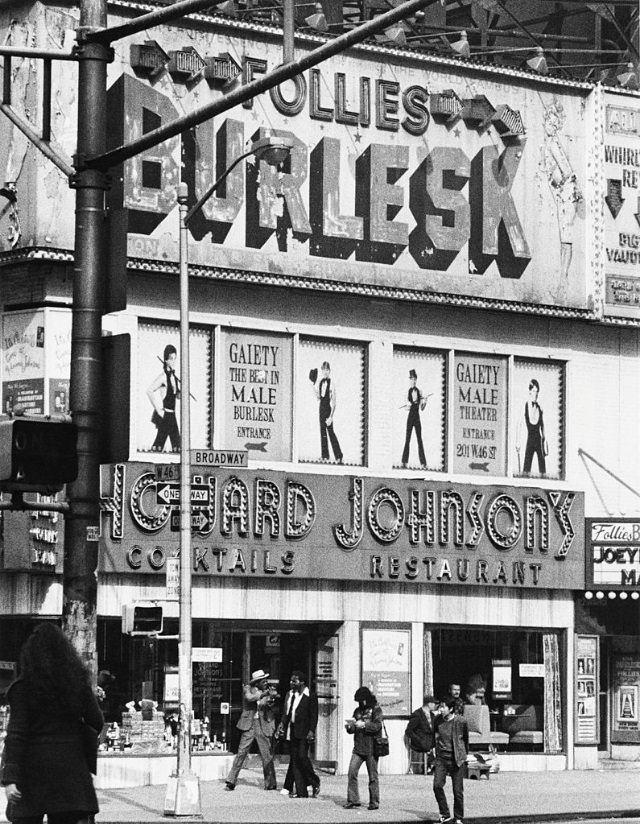
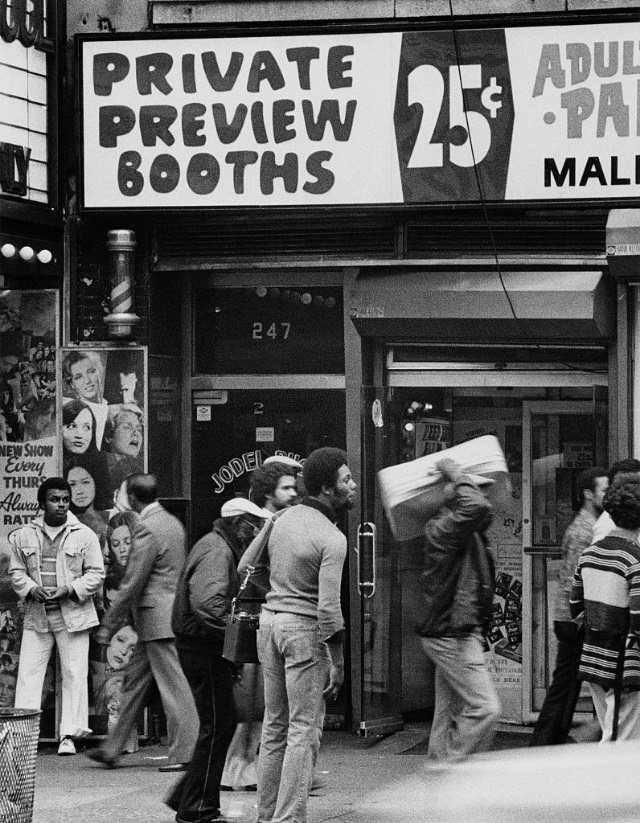
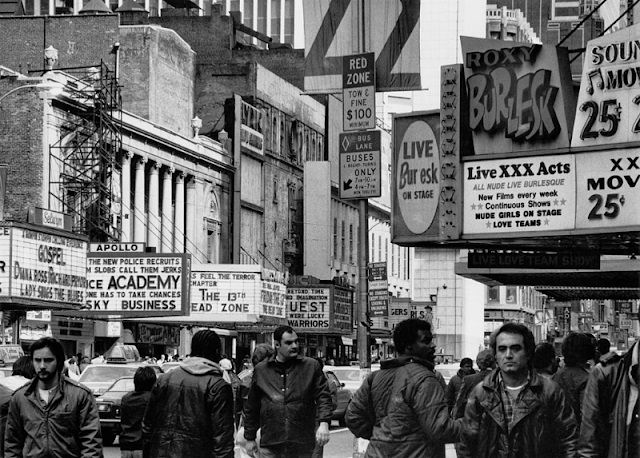
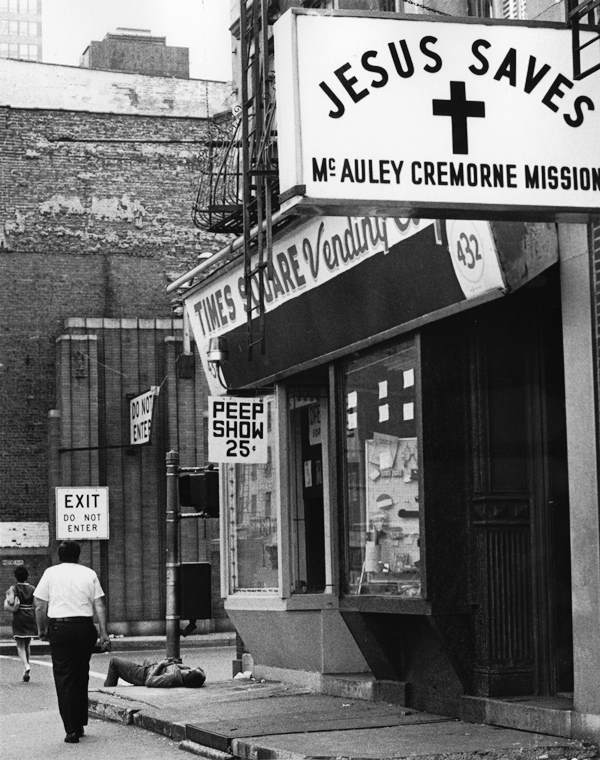
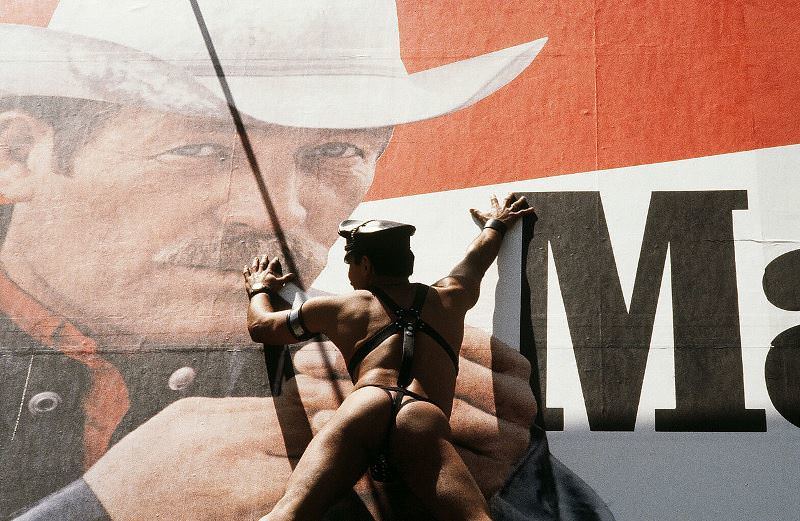
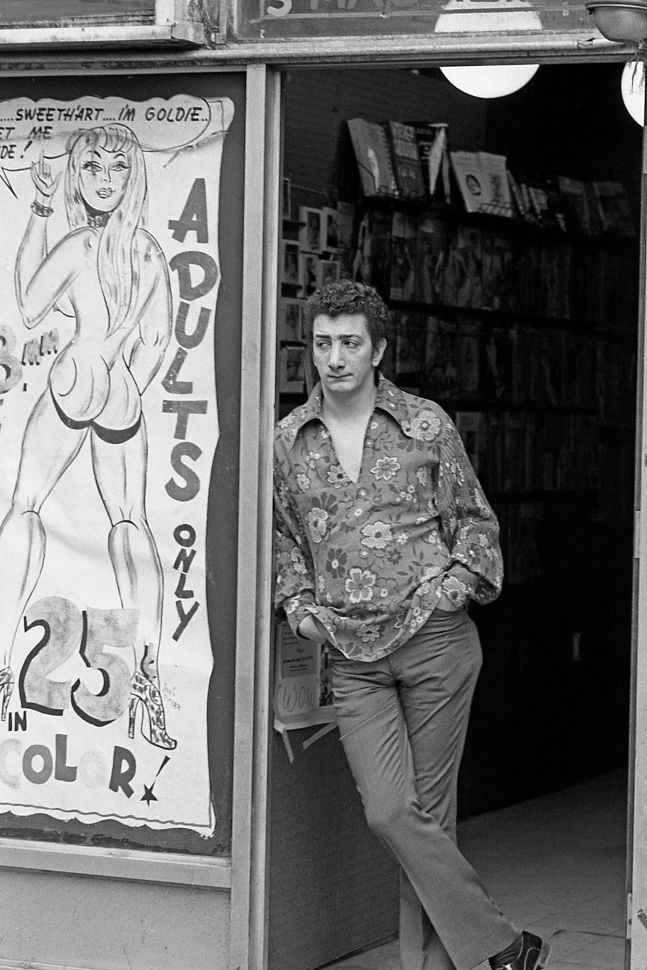
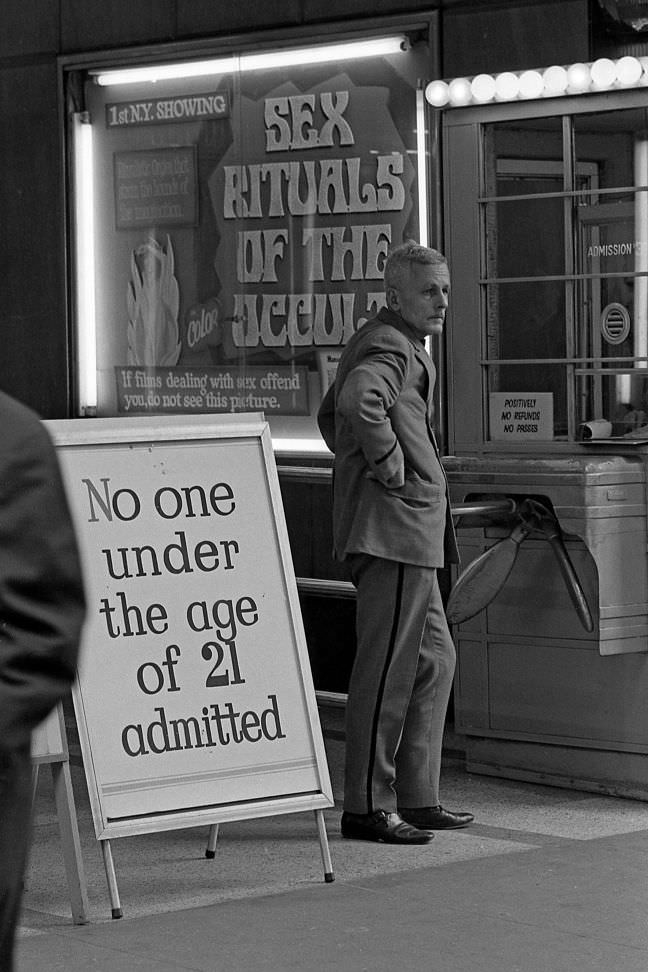
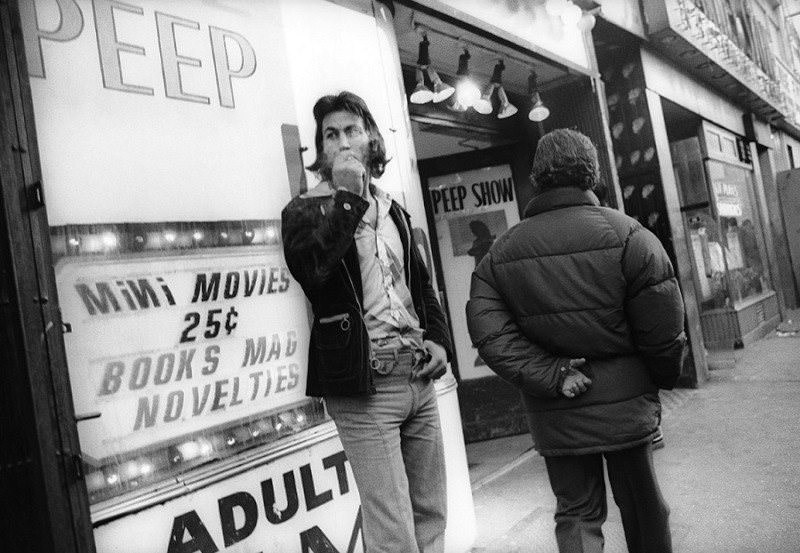
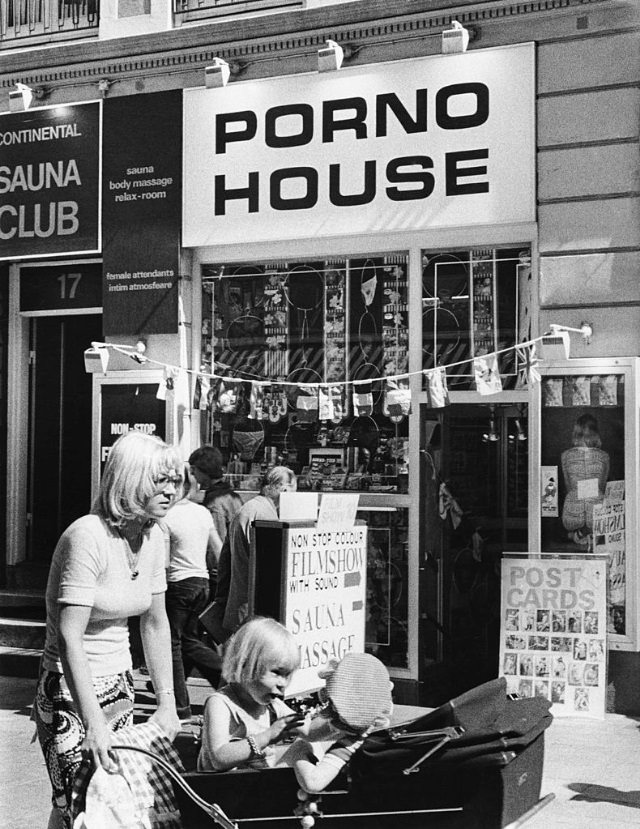
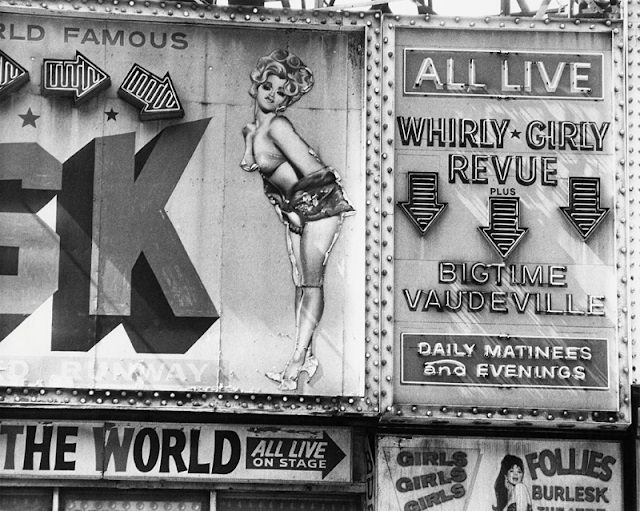
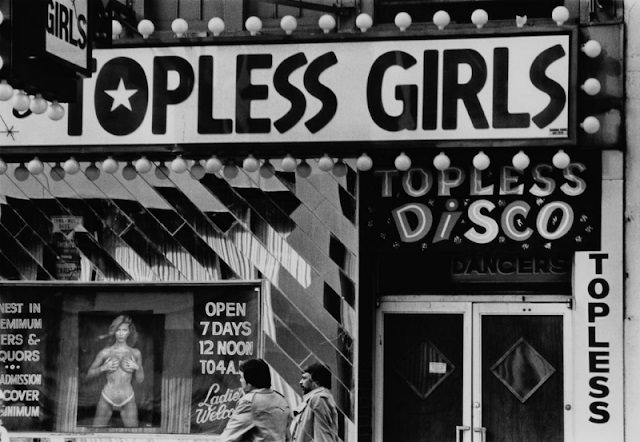
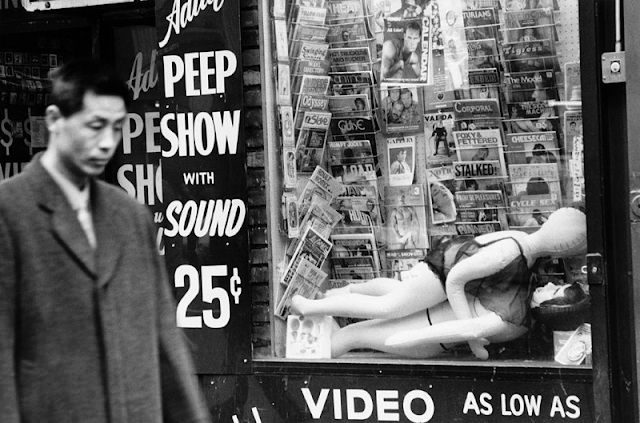
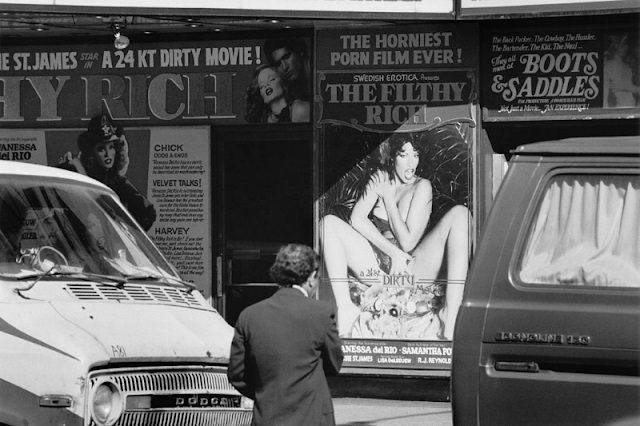
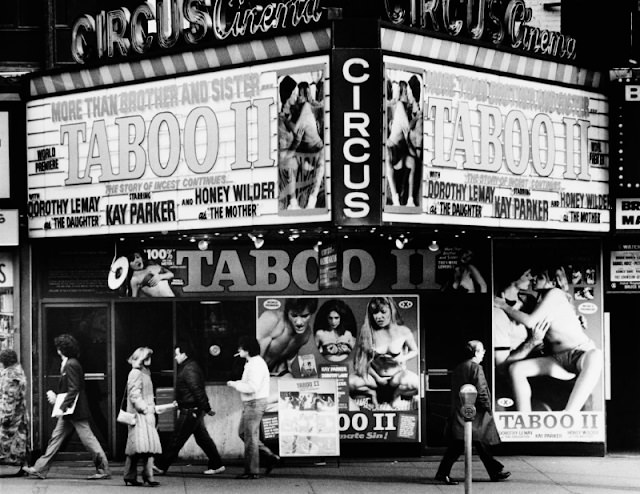
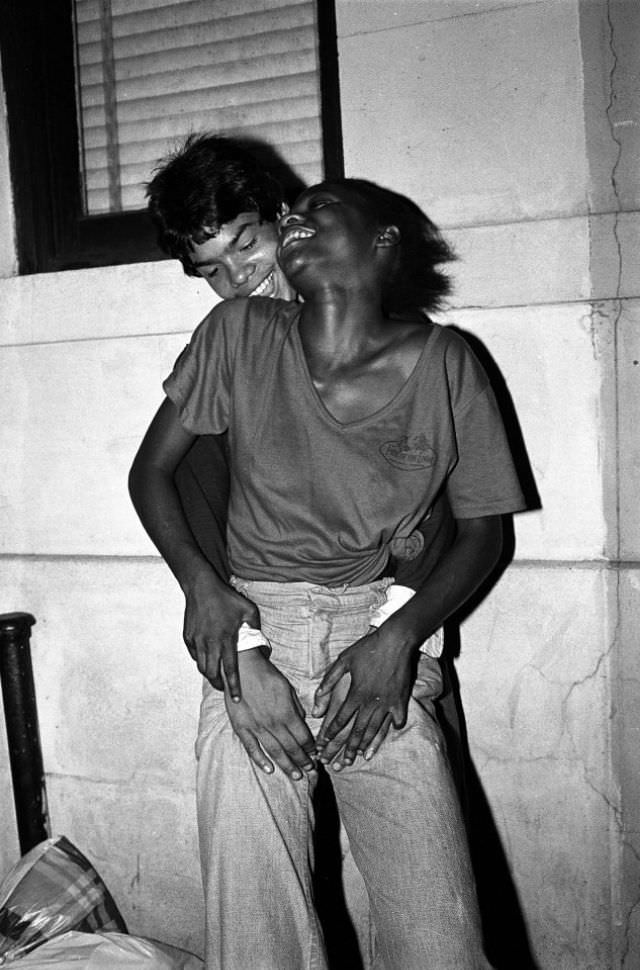
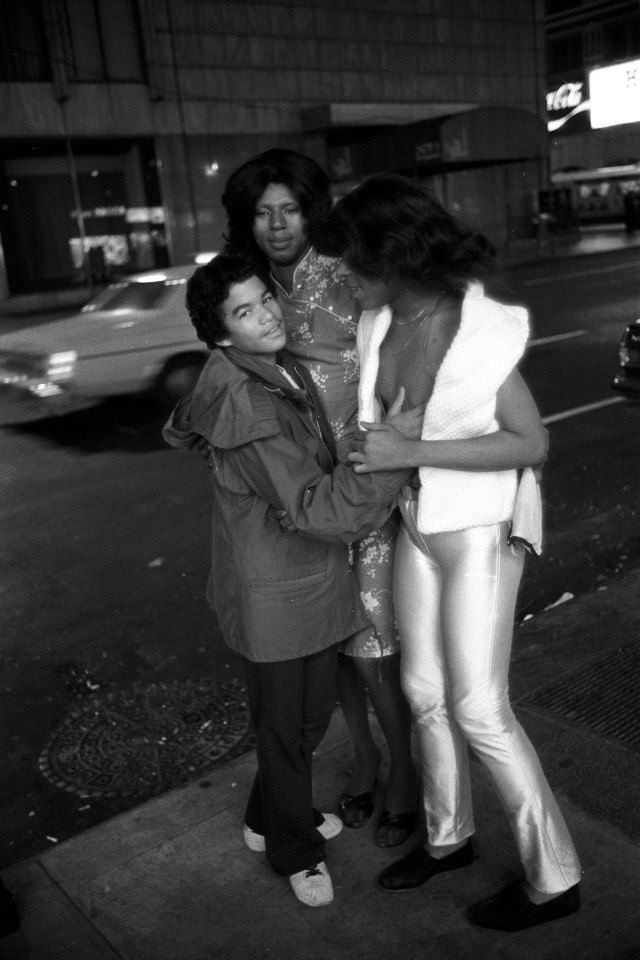
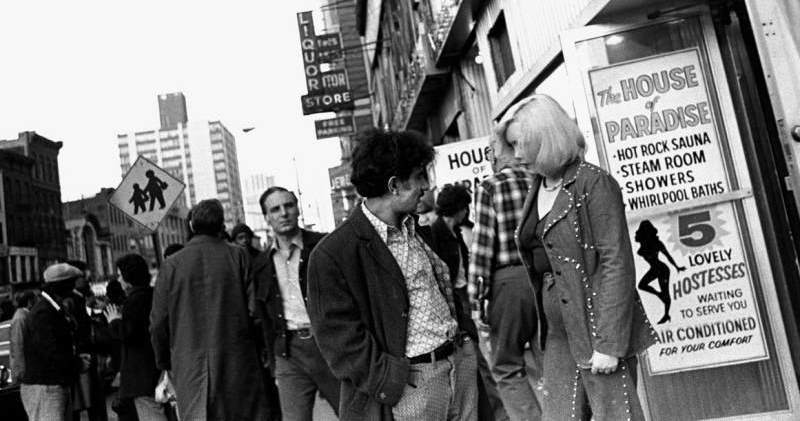
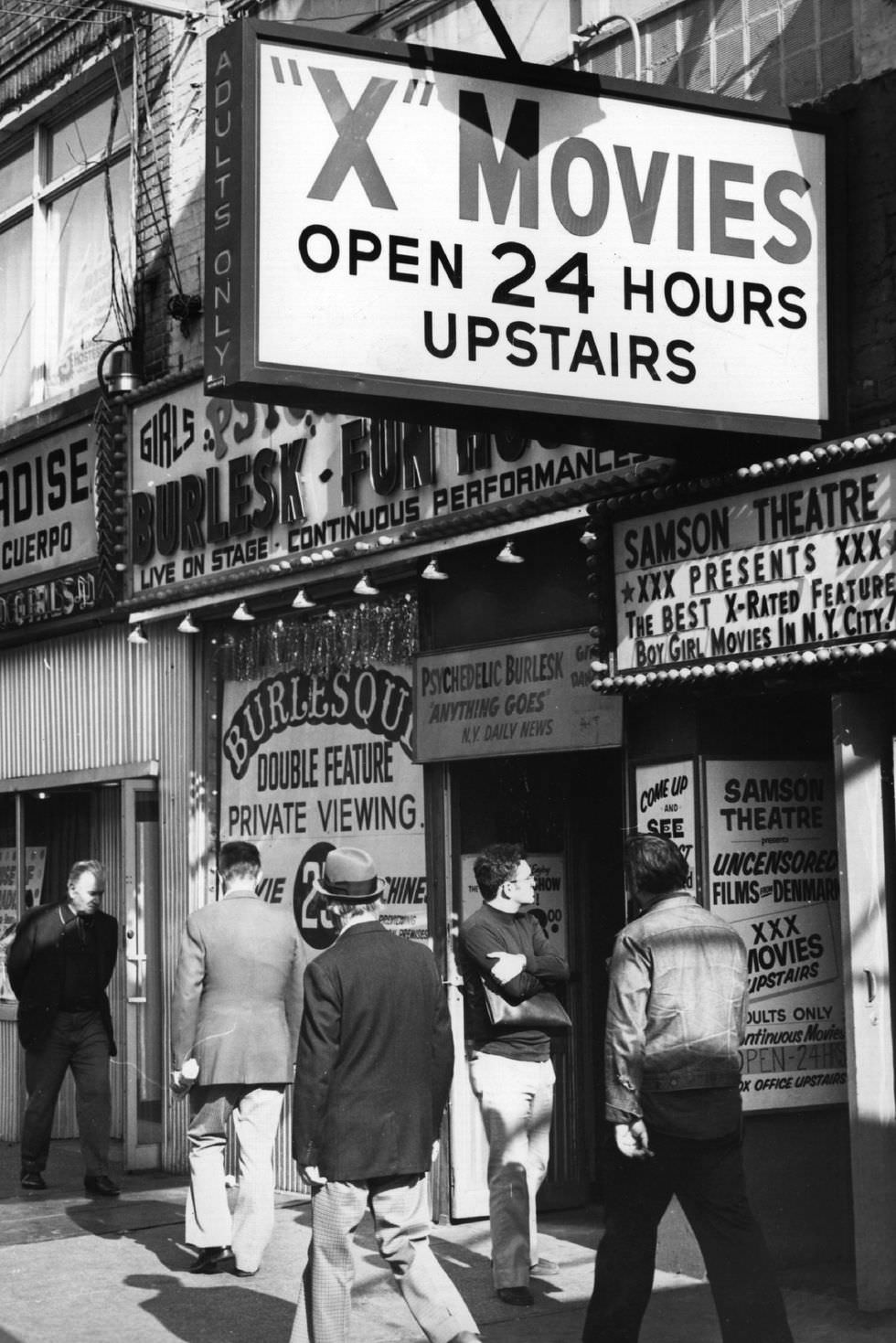
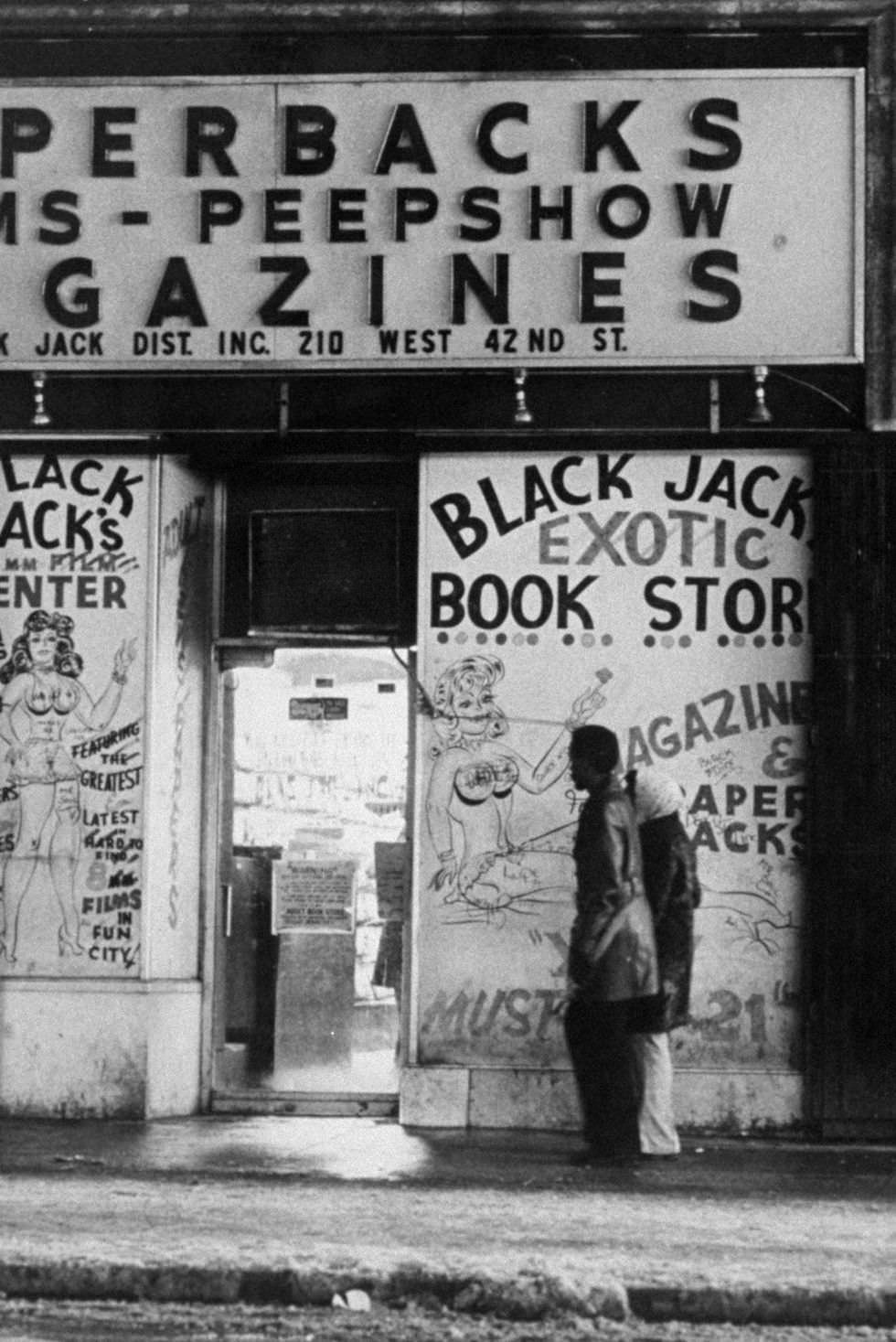

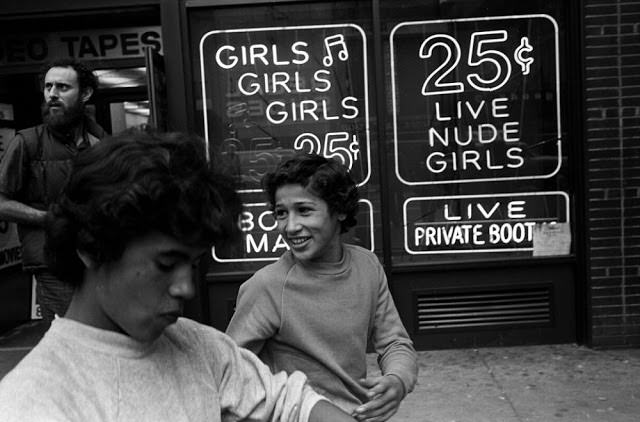
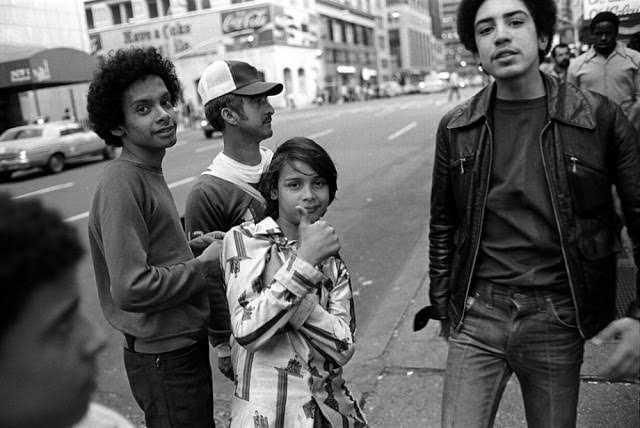
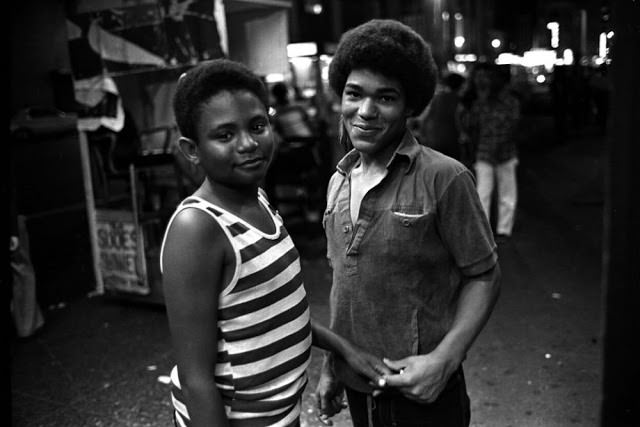
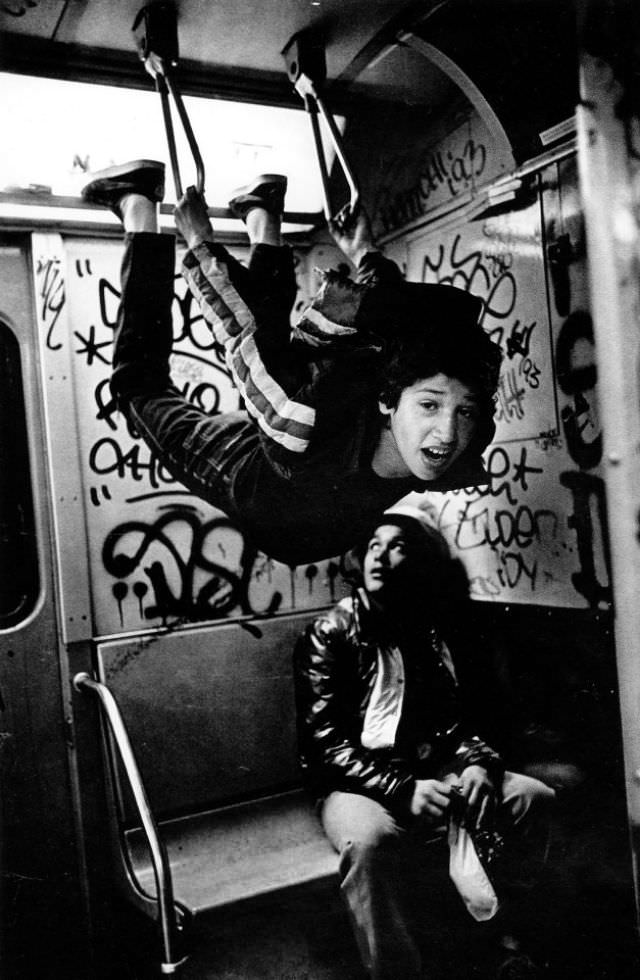
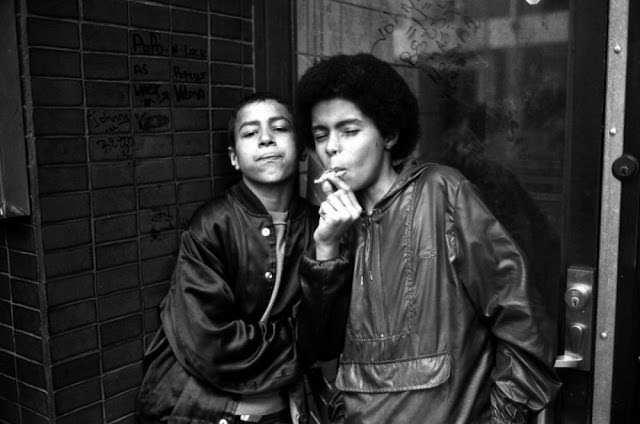
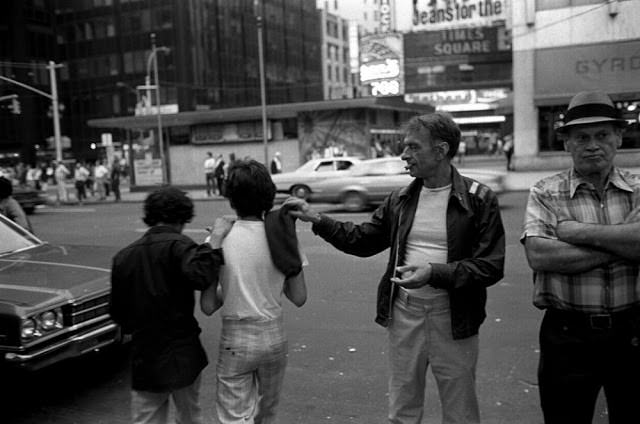
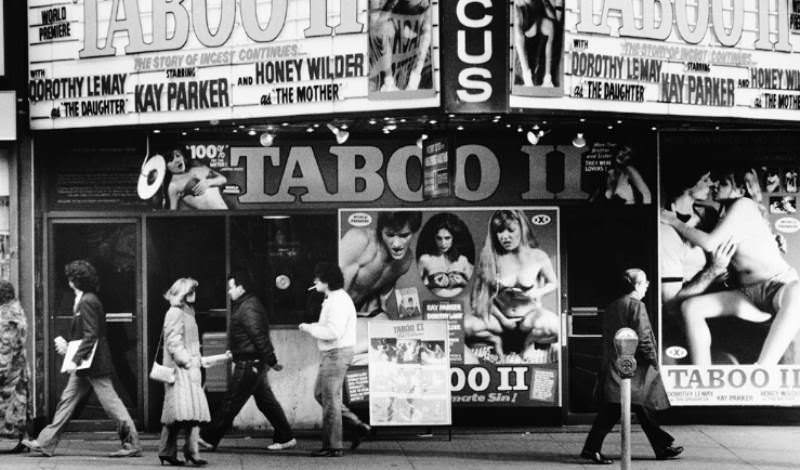
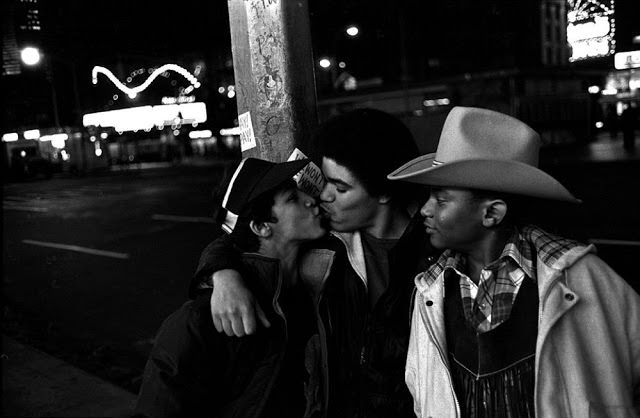
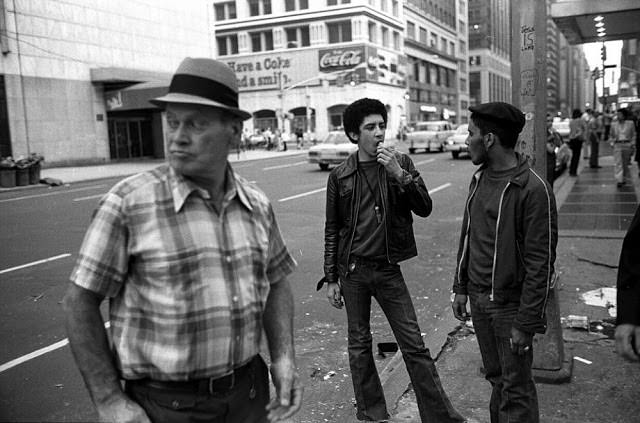
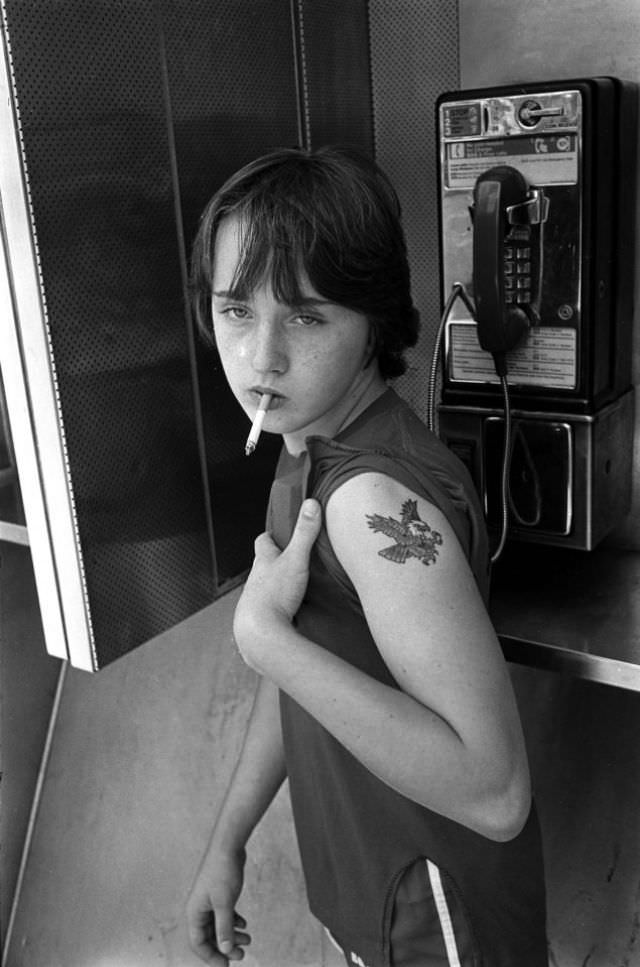
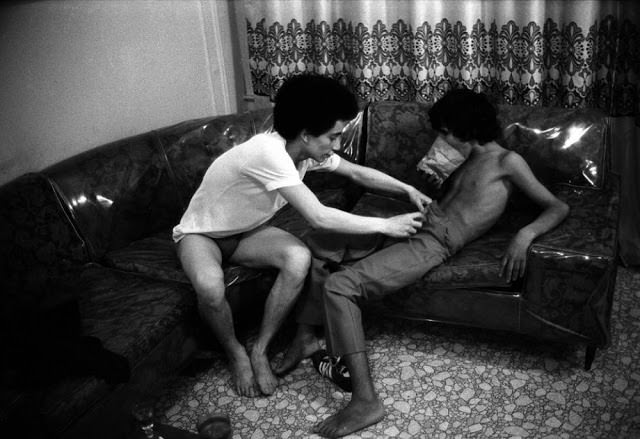
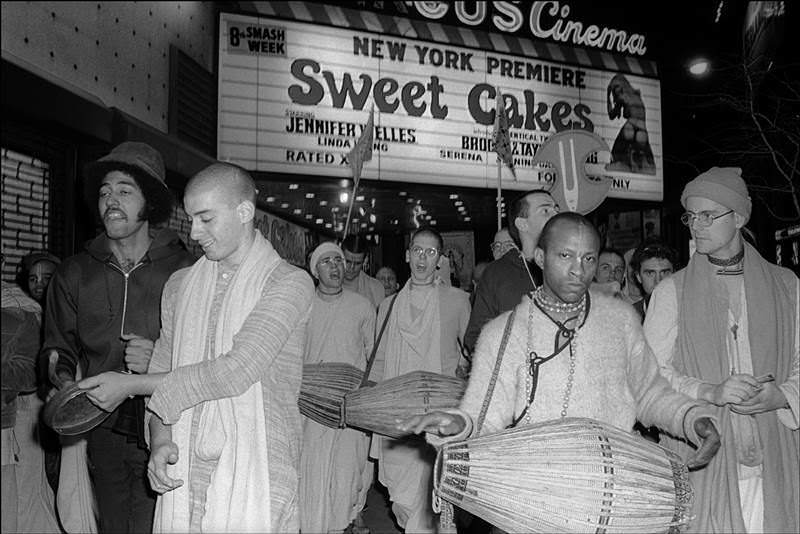
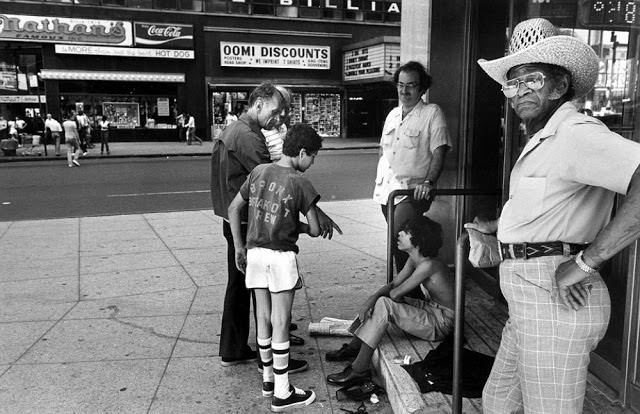
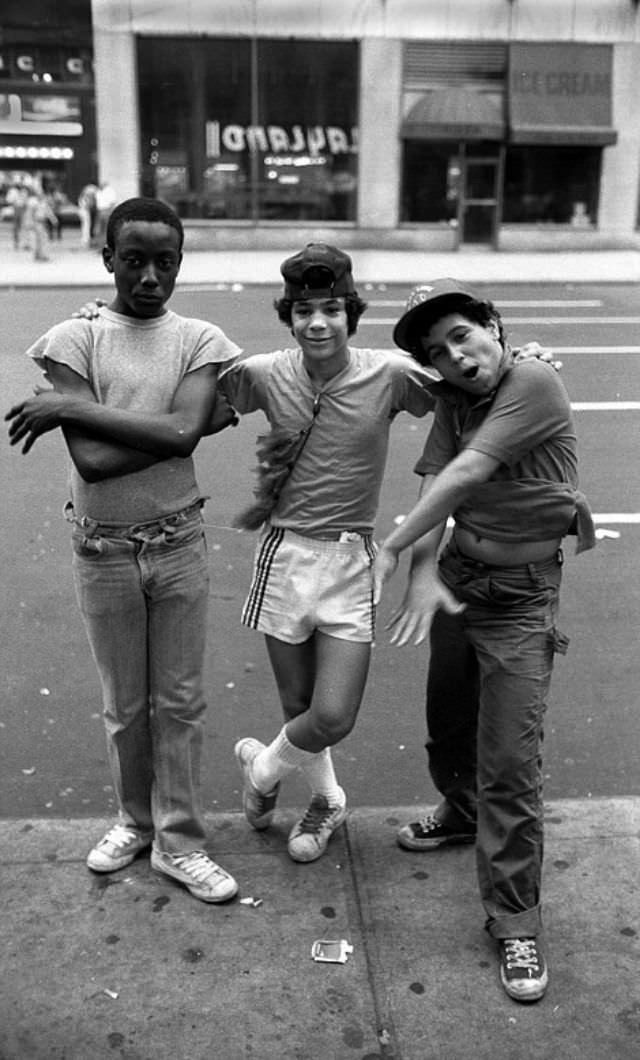
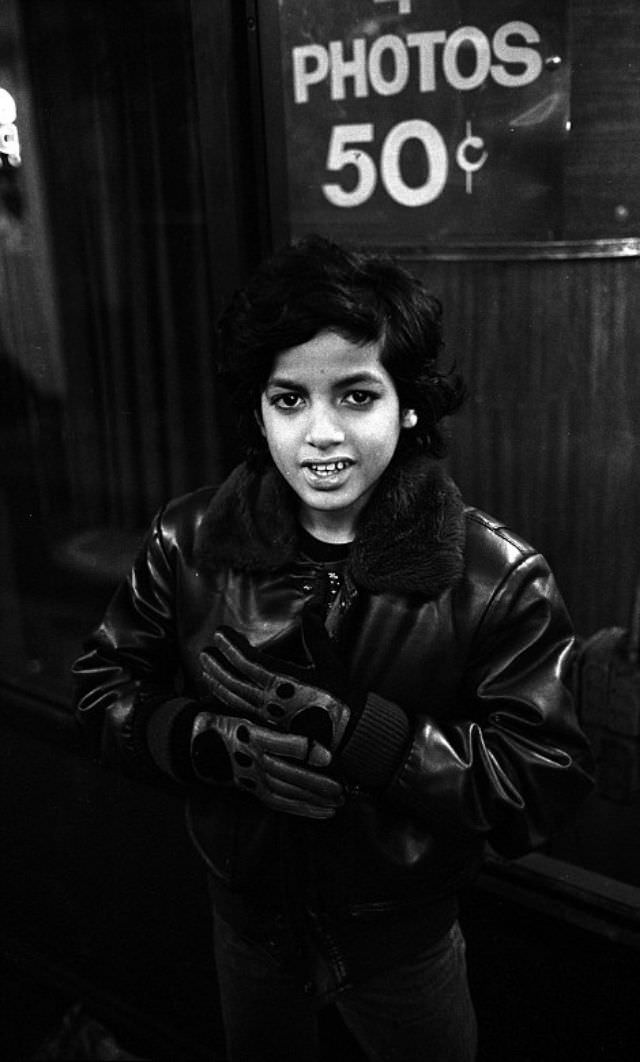
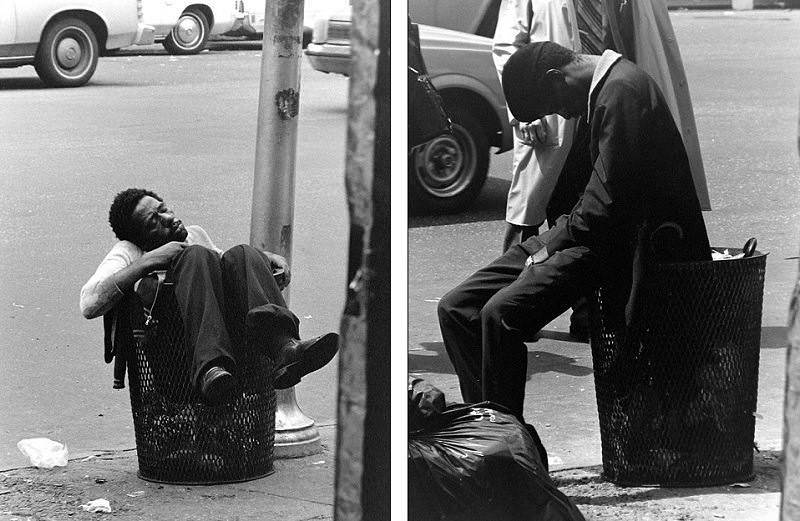

Before the 1970s, the city enacted many expensive social welfare programs financed by high taxes on the financial industry. When the industry moved to a more global corporate distribution model, the city suddenly had less tax money to pay for all these services. Averting the incoming financial crisis was the mayor’s priority at the time, Abe Beame. At the time, Gerald Ford was president. Though generally moderate himself, he was part of the Republican party as it began a shift to the right that eventually resulted in the party we know today. Rumsfeld and Greenspan advised Ford to make NYC a symbol of failed liberal policies by spiking the request for federal funds and telling Beame to eat shit. It is the classic Republican strategy to mess up things and then point to the thing they stomped on and say, “See, this thing we smashed to bits doesn’t work.” Due to a lack of funds, austerity measures were enacted. Suddenly, people’s social safety nets were ripped away, and their infrastructure fell further into disrepair. People turned to crime to make ends meet because the police were underfunded and the economy was failing. As a result, the crime wave really took off. New York City was left without power for two days during a heatwave during the blackout of ’77. Everything was smashed, burned, and looted by rioters. After the riots, the city was already stretched to the breaking point, and there was no money to repair the damage. It was common for people to burn their buildings in tax fraud, pick up the money, and leave without repairing them. NYC is littered with burned out husks of buildings, few remaining storefronts, and only the poor and disenfranchised can fend for themselves with few social services.
You can see just how bad Manhattan had gotten before the 1990s comeback by watching Taxi Driver or any number of mid-to-late 1970s films. It wasn’t easy
Or The French Connection.
Same with Los Angeles, but reversed.
It’s mostly around skid row. By a wide margin, the financial, jewelry, and arts districts look great.
The 70s through the 90s was the peak of urban decay in America.
While NYC in the 70s appeared like a lawless dystopian wasteland, it was also a thriving city of the super-rich at the same time.